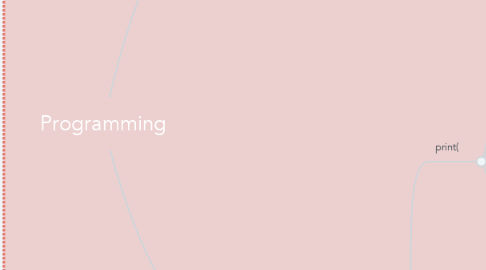
1. Shortcuts
1.1. Concatenation
1.1.1. Joining 2 or more pieces of code together
1.1.1.1. +
1.1.1.1.1. the way you join 2 or more pieces of code together
1.2. Slice
1.2.1. To take out some code
1.2.1.1. Debugging
1.2.1.1.1. fixing any mistakes your code might have
1.3. Variable
1.3.1. to make a shortcut in your coding, you can just put something like "word 1 =..." then instead of typing that word over and over again you can just say "word 1"
1.4. Index Position
1.4.1. used to take specific components out of the code, letter by letter, counting up by 1 while starting at 0 and not counting the last integer inside of your brackets (if you put [0:4] it will take the first, second, and third letter, not the fourth)
1.4.1.1. [0:4]
1.4.1.1.1. will not count the 4th letter
1.4.2. Integer
1.4.2.1. any whole number. positives, negatives, as well as zero but not fractions or decimals.
1.4.2.2. Float
1.4.2.2.1. does use positive, negative, and zero as well but it does use decimals. still no fractions
2. Necessities
2.1. print(
2.1.1. To make the computer say something using code
2.1.2. String
2.1.2.1. the things you will make the computer say
2.1.3. ("string literal")
2.1.3.1. how to make the computer say anything you want it to. everything you type into the ( ) will show up exactly how you type it as long as you have "print(" before it, ")" after it and quotation marks before and after whatever you want it to say
2.2. input(
2.2.1. if you want a pop up box to appear on the user's screen, use this.
2.2.2. input
2.2.2.1. the code you put into the computer
2.2.2.2. output
2.2.2.2.1. the results the computer gives because of the code
2.3. #comment
2.3.1. just in case you need to add your name or the date or whatever you want without the computer seeing it/picking up on it, if you put a "#" before whatever you are about to say, its invisible to the computer and will not ruin your code
2.3.1.1. Pseudocode
2.3.1.1.1. in normal English, it helps to map out your thoughts before the code, you can use a # before it and the computer won't pick up on it
2.4. def main ( ):
2.4.1. your code will not function without this at the beginning
2.5. main ( )
2.5.1. your code will not function without this at the end

